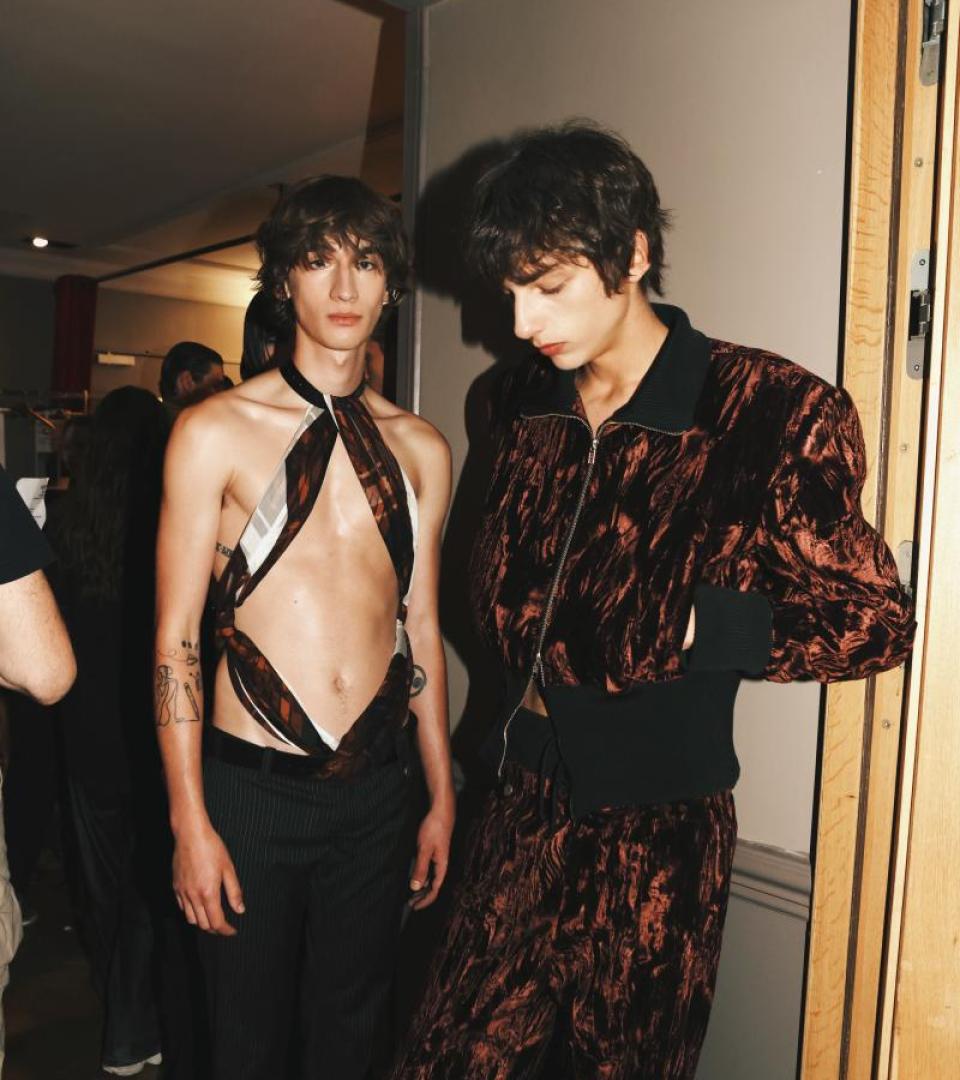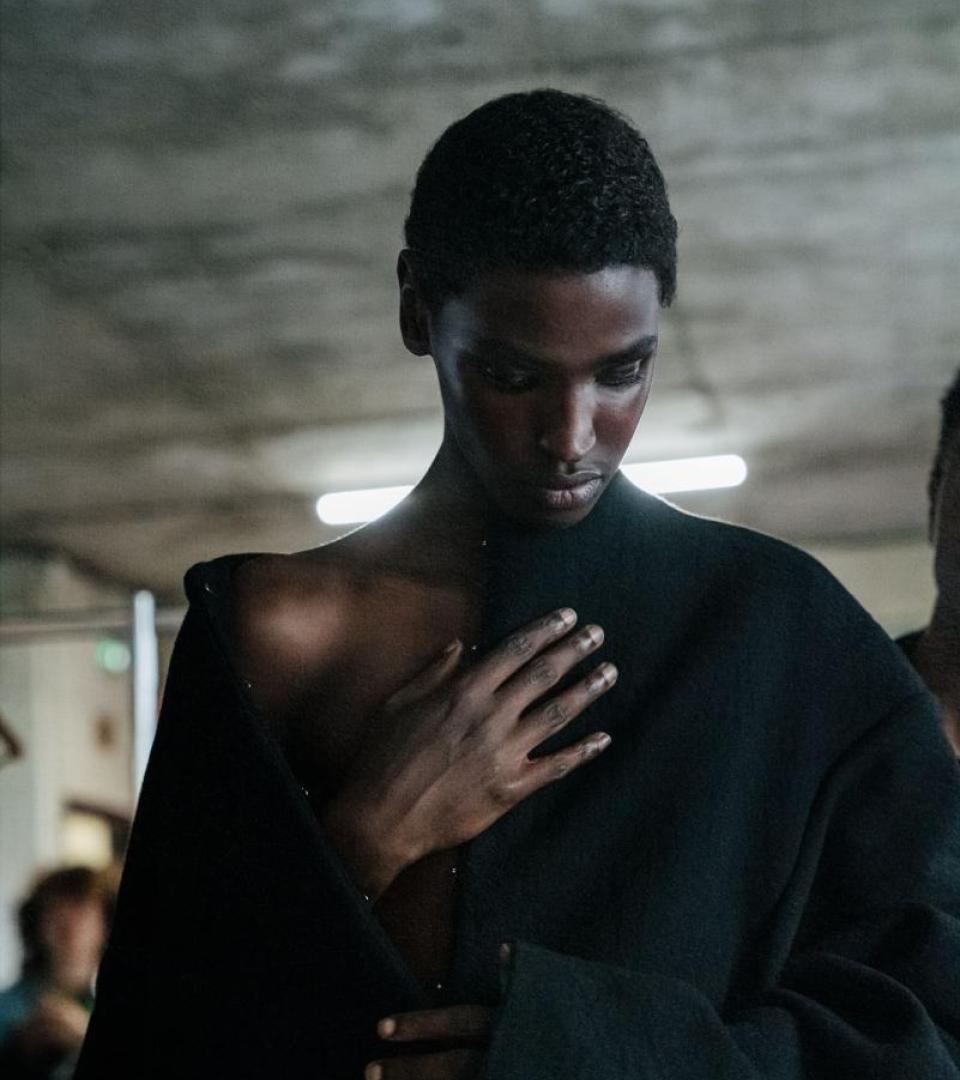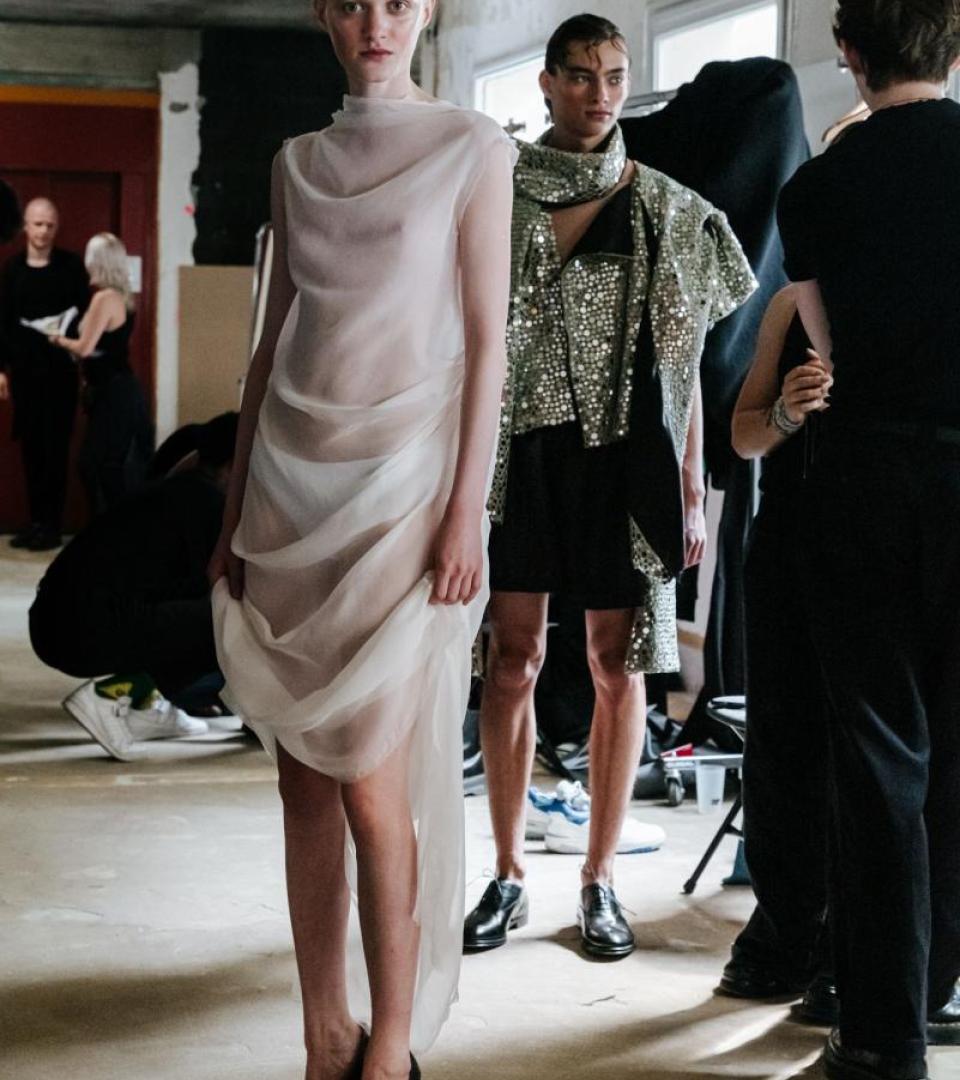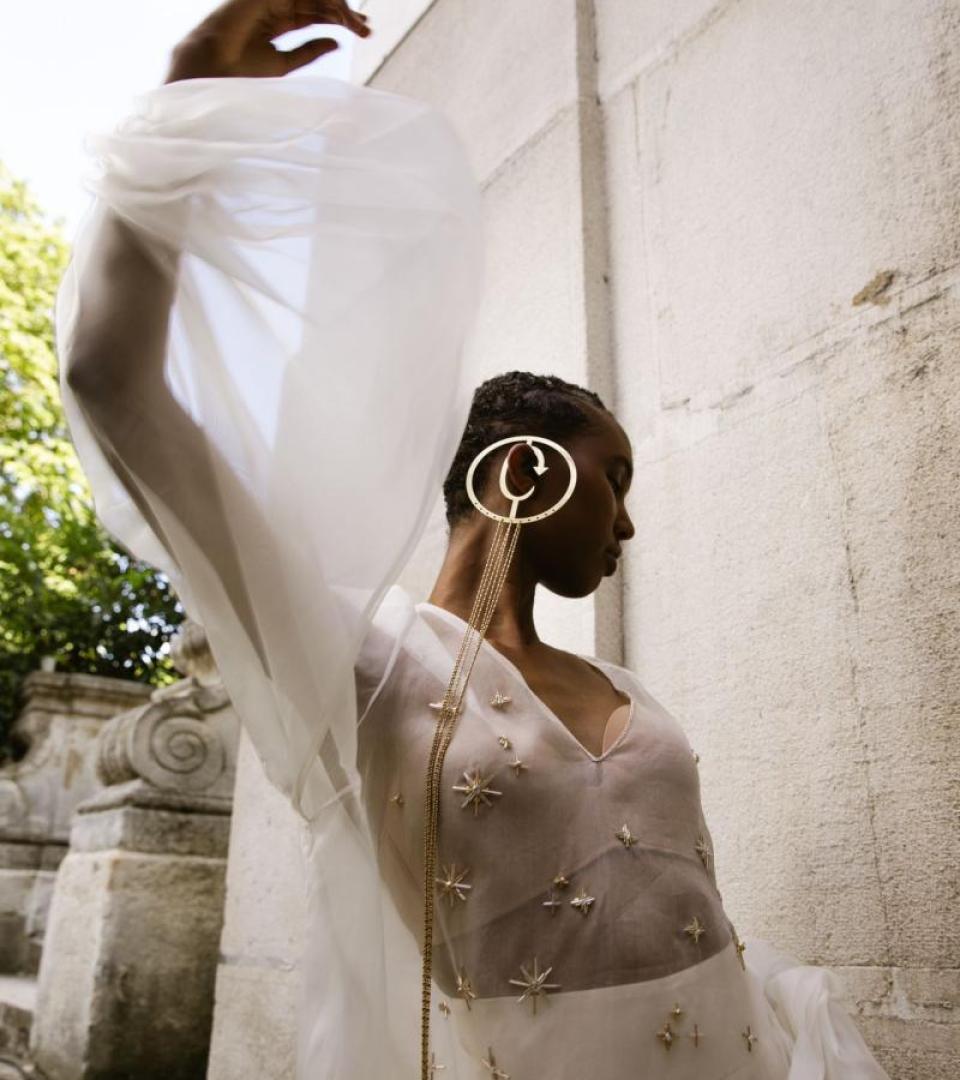In van der Kemp’s case, he has spent the last 10 years as a fashion designer embracing new ethics in luxury fashion, working exclusively with reclaimed fabrics, offcuts, and deadstock. His latest outing, Wardrobe 19, delves further into the art world. He paints over discarded prints of classic paintings, acquired from old hotel estate sales, deconstructs them, and through the alchemy of fashion transforms them into a new piece. Sculptural papier-mâché dresses elaborate on the aforementioned work that he designed in December. Alongside this, there are classic couture dresses, tailored jackets, and flou dresses. Of course, they bear the RVDK stamp, constructed only from reclaimed fabrics. The common thread, as it were, is that they are all made with the same intensity and intuitiveness. Here, the lines between art and fashion continue to blur, but the mission statement about sustainability has never been so clear.
“We’re not a typical couture house where our couture is a way to make money; it's a way for us to tell a story. In this world of chaos, what we’re going to present [on the runway] will be a little chaotic as well,” said van der Kemp from his studio in The Netherlands.
What was your starting point for this season?
We never think about it as a collection; we think about wardrobes. Wardrobes are a more sustainable approach because people are still ordering from Wardrobe 5 and we get press requests from Wardrobe 7. Even though we’re at Wardrobe 19, we’re building from those. With a ‘collection,’ for me the next season it’s outdated. With that in mind, we never really have a theme for each season. I work in a very intuitive way so I’m sensitive to what’s going on in the world and I’m always trying to comment on that but to put a positive spin on it.
It’s hard for me to tell the full story because, basically, my stuff comes together in the two days before the show. I love this tension where I don’t know where it’s going because this makes it exciting. It comes across for the audience as something all at once rather than having a concept and working to realise it. Many designers have a concept and design very specific pieces. They’re being shown the exact way they envision things, but the great thing about fashion is that it changes constantly.
This season considers the interaction between art and fashion. Do you think fashion can be art?
I signed up with a gallery in Amsterdam for my art because I make it with the same intent as I make fashion. For me, it’s one thing; they’re part of the same world. I don’t see a strict division between the two. It comes from how I work with everything that already exists and trying to make something different from it. It becomes a sort of organised chaos because a dress made out of old paintings can stand alongside a beautifully tailored couture suit. They have the same intention but they tell their own story.
How do you visualise your sustainability philosophy today?
For 10 years, we’ve been trying to make people aware of the need for a more sustainable world. Our mission is new ethics in luxury fashion and it’s become more and more important with everything that’s going on in the world. It’s important for people to take a position on that and try to do good. As professionals, we have a responsibility.
With diversity in the world, I want to address and inspire different people. Couture is like a leader in fashion whereby it inspires people. This is how I see it. Girls that may buy fast fashion might think that they could buy something vintage or buy in a different way, they could think about upcycling. We get Instagram messages from people and young designers inspired by what we do. Upcycling didn't really exist before we started, and now it's become popular so I feel like we had a big role in that. We can inspire people to think about things in a different way and to think about their behaviour or the way that they shop. It’s why you create a wardrobe around your personality—this is something that couture does so well.



